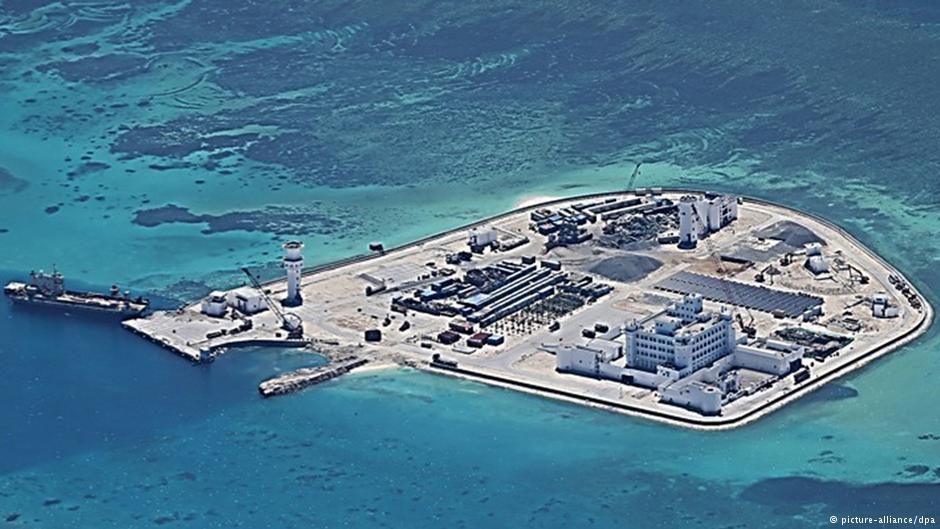China says it will continue to build military and civilian facilities on artificial islands in the disputed South China Sea. Beijing told other countries it has no intention of militarizing the vital trade route.
Speaking at the conclusion of a weeklong meeting of Asia-Pacific leaders in Malaysia, Deputy Foreign Minister Liu Zhenmin insisted that China had no intent to militarize the disputed maritime area.
The minister reaffirmed that the construction of the artificial islands was designed to “promote public service” in the region by aiding ships, fishermen and disaster relief efforts. The construction would also include military facilities to protect the atoll and nearby reefs, he said.
The talks, which include the United States, China, Japan and others, were hosted by the 10-country Association of Southeast Asian Nations (ASEAN).
China has claimed sovereignty over virtually all of the resource-rich South China Sea, parts of which are also claimed by Vietnam, Malaysia, Brunei, the Philippines and non-ASEAN member Taiwan.
‘The world is watching’
“The world is watching” to see if Beijing will behave like a “responsible global leader” in the standoff, Philippine President Benigno Aquino told leaders gathered at the summit.
Wading into the fray, Japanese Prime Minister Shinzo Abe called for the South China Sea not to be militarialized, though he did not directly name Beijing, the Tokyo-based news agency Kyodo reported.
A Chinese official quoted Premier Li Keqiang as telling Sunday’s closed-door summit that countries “from outside the region” should refrain from inciting tensions in the maritime dispute.
On Sunday, US President Barack Obama, who earlier in the week had renewed calls for China to halt attempts to reclaim the islands, said he would host a meeting of the ASEAN leaders in Washington next year.
“This region … is critical to security, prosperity and human dignity around the world,” Obama said, vowing to continue trade, diplomatic and security support.
Deputy Foreign Minister Liu was particularly critical of the US’s recent deployment of naval ships to the South China Sea.
Right to free passage
Washington recently angered China by sending a warship within the 12-nautical-mile (22-kilometer, 13-statute-mile) territorial limit around Subi Reef in the Spratly Islands archipelago (pictured above), where China and the Philippines have competing claims.
The Obama administration had previously called the move a means of stressing the right to free passage in waters claimed by China, but Liu called last month’s USS Larsen voyage “political provocation.”
Meanwhile, ASEAN issued a joint statement on Saturday stressing the need to maintain navigational freedom and flyover rights within the South China Sea.
Washington maintains that navigation within the disputed area could be threatened by actions such as China’s island-building in one of the busiest trade routes in the world.
Since 2013, Beijing has hastened the creation of new outposts by piling sand on top of reefs and atolls, then adding buildings, ports and airstrips large enough to handle bombers and fighter jets – activities seen as a bid to alter the territorial status quo by altering the geography.
“One should never link the military facilities with efforts to militarize the South China Sea,” Liu said.
The islands are located some 135 kilometers (80 miles) southeast of the Philippine island of Palawan.
jlw/mkg (AP, AFP, dpa, Reuters)




